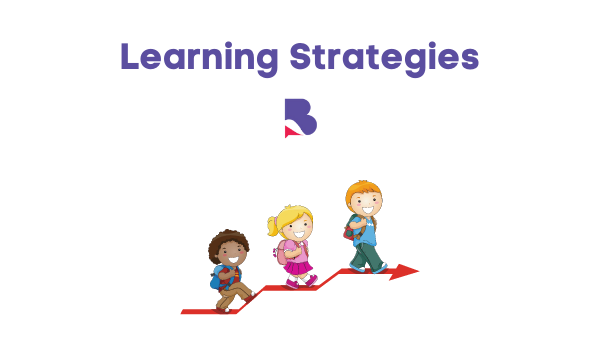Learning Strategies

What are learning strategies?
A learning strategy is an individual’s way of organizing and using a particular set of skills in order to learn content or accomplish other tasks more effectively and efficiently in school as well as in non-academic settings (Schumaker & Deshler, 1992).
A learning strategy aims to facilitate the active learning process by teaching students how to acquire information and use what they have learned to solve problems and overcome obstacles.
These strategies involve teaching how to develop a plan for studying for a test, monitoring understanding of the content, clarifying the materials, and evaluating work. This type of self-regulated learning is the key to successful life-long learning and includes the development of such strategies as goal setting, self-instruction, and self-monitoring. (Graham, Harris, & Reid, 1992)
Types of learning strategies
Learning strategies differ and are often effective learning strategies are used together, providing students specific learning opportunities.
Aiming to optimize the acquisition of knowledge, learning scientists Yana Weinstein and Megan Sumeracki developed six learning strategies:
Spaced practice
This strategy promotes learning in bits and pieces. It seems that our brain needs time to recover after every session of learning. Additionally, it is normal to lose parts of the information learned, only to remember it later, strengthening information acquisition.
Spaced practice learning is the opposite of information-stuffing in a short time spawn.
Retrieval practice
The science of learning research has discovered that retrieving information from the mind without having access to notes or study materials is a lot more beneficial than re-reading.
This strategy encourages students to speak or write down the information learned or even have an open discussion with a peer.
Elaboration
One of the most powerful learning strategies is the elaboration practice.
Students are encouraged to discuss the material in detail, ask questions and use different thinking strategies.
Therefore, students can make connections between the ideas they try to learn and personal experiences from everyday life while amplifying their social skills.
Interleaving
Although jumping from one idea to another has been criticized through the years, the interleaving process implies allowing students to switch from repetition to diversity.
Repeating the same action will make them learn the same pattern. Alternatively, using the interleaving instruction model, the students learn how to choose particular strategies suitable for different problems.
Concrete examples
Most teachers already use this strategy in their teaching and professional learning.
The more abstract the idea is, the more critical it is to link a concrete example to it.
Having students come up with concrete examples increases student performance and understanding.
Dual coding
Educational research shows that linking a visual representation to a piece of information.
To put it simply, students are encouraged to create their own visuals of the concepts they are learning.
Whether it is a drawing, a graphic, a timeline, the learning outcomes of dual coding are immensely influential.
BONUS: Cooperative learning strategies increase student retention, promote students’ self-esteem and enhance student satisfaction with their learning experience.
External link: